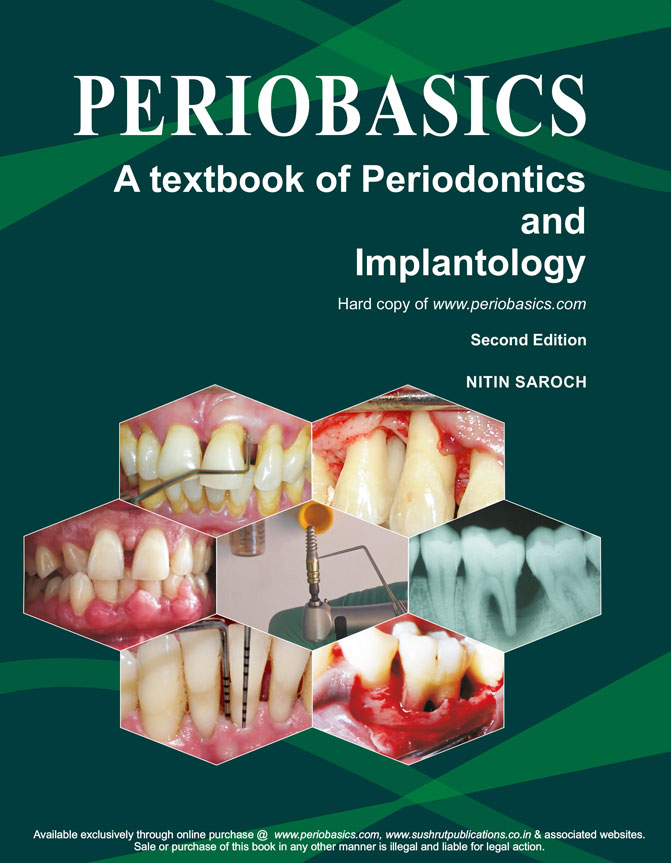Introduction
Periodontal surgical procedures require adequate asepsis and disinfection. The preparation of the operating room, operating team, and the patient should be done systematically. An appropriately performed surgical procedure in a complete aseptic condition minimizes the chances of post-operative complications related to infections and also minimizes the chances of transmission of infections. In the following discussion, we shall read about the procedures involved in the preparation of the operating room, operating team, and the patient in detail.
Preparation of the operating room
The operating room should be well ventilated and should have polished stone or glazed tiled floor. Appropriate cleaning and disinfection is the cornerstone of the operating room asepsis. Cleaning removes organic matter and visible soils that interfere with the action of disinfectant. Following cleaning, the operating room floor should be mopped with an appropriate disinfectant. All the items that cannot be sterilized (such as dental chair, instrument trolleys, stools, tables) should be adequately disinfected by various chemical disinfection methods discussed previously in this chapter. This procedure removes most of the viable bacteria from these surfaces.
A through sterilization of instruments, gloves, drapes, sponges, sutures should be ensured. It should be noted that anything that may come in contact with the operating field directly or indirectly, should also be adequately sterilized, for example, the table cover on which the instruments are to be placed or instrument tray to keep the instruments. The instruments are arranges on the instrument table in a specific order starting, with the diagnostic instruments followed by instrument used for placing incision, then instruments used for debridement (scalers, curettes and scissors) and finally, the suturing instruments.
Periobasics: A Textbook of Periodontics and Implantology
The book is usually delivered within one week anywhere in India and within three weeks anywhere throughout the world.
India Users:
International Users:
Recently, the world has face coronavirus infection which is highly infectious in nature. Along with many other protocols that should be followed to treat potential patients of coronavirus infection, laminar flow ventilation should be maintained in the operating room. Laminar flow ventilation comprises a continuous flow of highly filtered ultraclean air of less than 10 colony-forming units per metre cubed (cfu/m3) of bacteria. This is re-circulated under positive pressure into the operating theatre with surgically generated contaminants being continuously removed. Although, before coronavirus infection, most of the dental offices throughout the world had a central air conditioning system but now it is recommended that laminar flow ventilation should be established in the operating room.
The primary advantage of laminar airflow is that the infectious aerosol generated in the operating room is carried out in one direction and is filtered. In this way, the chances of aerosol mediated transmission of infections are minimized. The laminar flow in an operating room may be directed in a vertical direction or horizontal direction. For dental operating rooms, laminar flow in a vertical direction directed from roof of the room to the floor is recommended. This is because most of the dental procedures like scaling or cavity cutting using air rotors involve the aerosol generation.
The instruments to be used during the surgery should be kept in a specific manner. Starting from left to right, the diagnostic instruments are placed in the beginning, followed by BP handles and knives for the placement of incision. After that, scaling and root planing instruments (scalers and curettes) are placed. At the right end of the tray, instruments used to place sutures (needle holders) are kept.
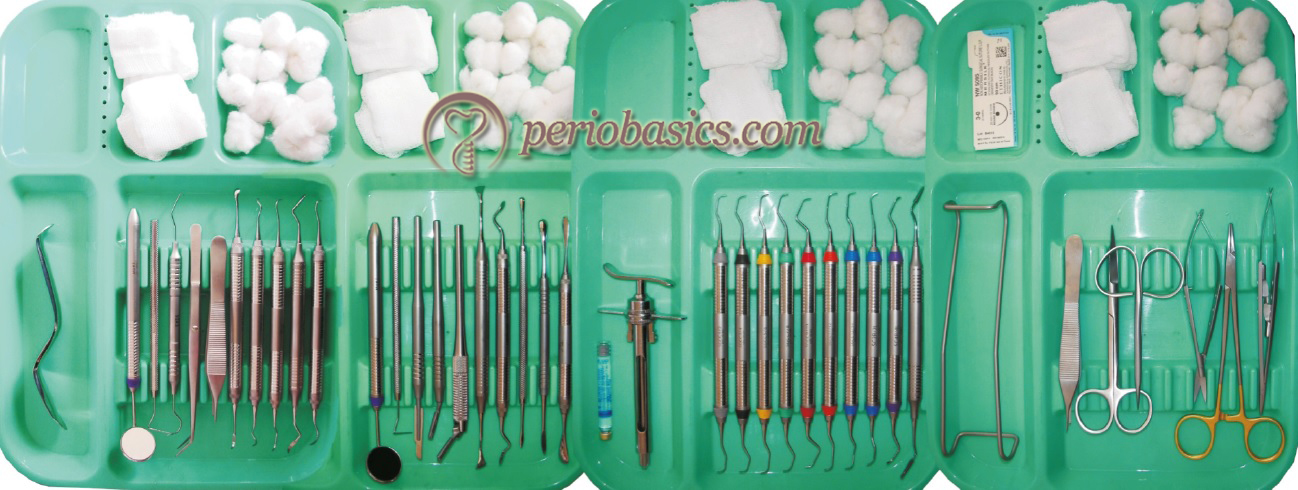
Dressing of the operator and assistant
After removing street cloths, both, the operator and assistant should put on a clean cotton scrub suit. The rationale for wearing a scrub suit is that along with eliminating the dust-laden cloths from the operating room, it also provides comfort to the operator. Then the operator and assistant put on clean head caps and masks. If the operator doesn’t wear glasses, he/she puts on a pair of shatter-resistant glasses to protect the eyes from coming in contact with the contaminated debris/aerosol.
Preparation of arms and hands and wearing gown and gloves
The operator and assistant should roll the sleeves well above the elbows. All jewellery and watch should be removed and nails should be short and smooth. Hands and forearms are then thoroughly cleaned with soap. Hands are cleaned by starting with scrubbing the palms of the hand, using parallel strokes. The palm is scrubbed in three sections: from little finger to the thumb scrub all the surfaces of the figures; then hand is closed and knuckles are scrubbed and finally, arms are scrubbed upto elbows using longitudinal strokes. Arms and figures are then rinsed thoroughly draining them from fingertip to elbow. The hands and arms are then dried with sterile towel and sterile gown is then put on. The gloves should be put on in such a way that the outer surface of the gloves does not come in contact with hand. At this point it should be remembered that any area outside the operating field is considered as contaminated and is not to be touched. After putting on the gloves, patient preparation is done.

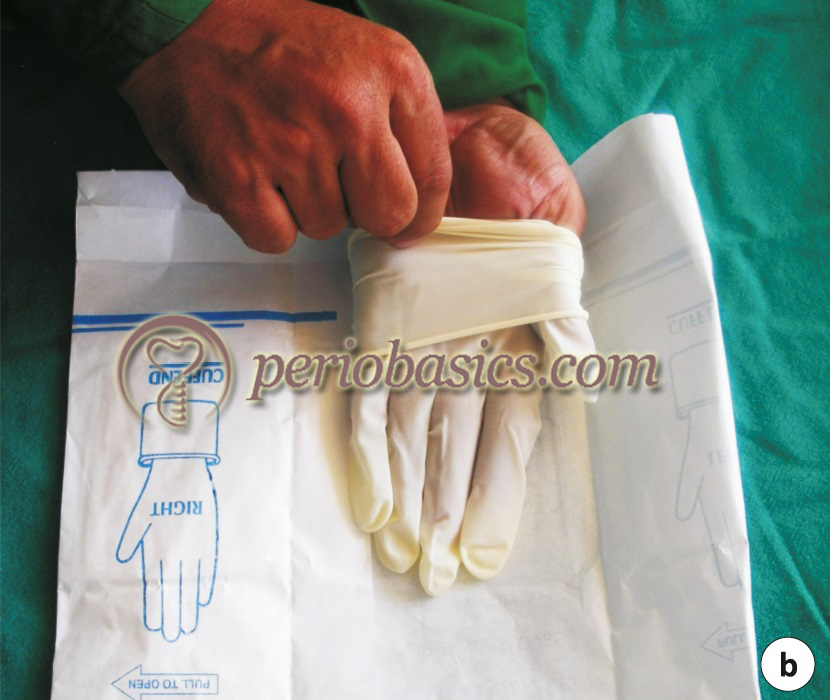

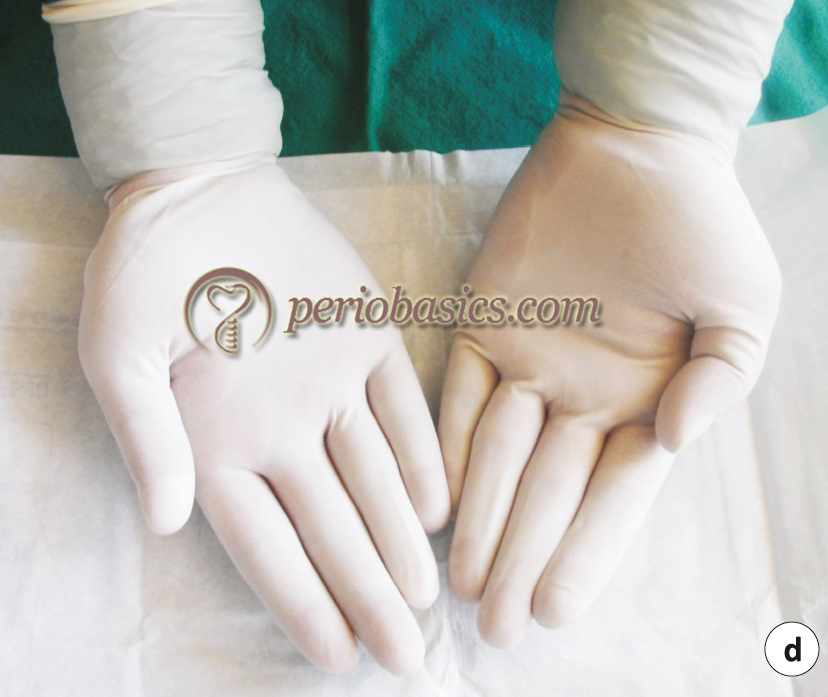
Patient preparation
Once the operating team is ready, the assistant prepares the patient. The patient is draped in such a way that only the area to be operated (oral cavity) is open to the environment. Rest all the surfaces are completely coved with sterile drapes. Assistant then uses a large sponge folded into 1½ inch square to apply antiseptic solution widely around the mouth, extending below the chin to the neck and upto the nose, including both cheeks. If the antiseptic solution used is a tincture, the area should be dried with a sterile sponge so as to avoid any chemical burn. Sterile petrolatum is then applied to the lips and commissures of the mouth to keep these areas well lubricated.


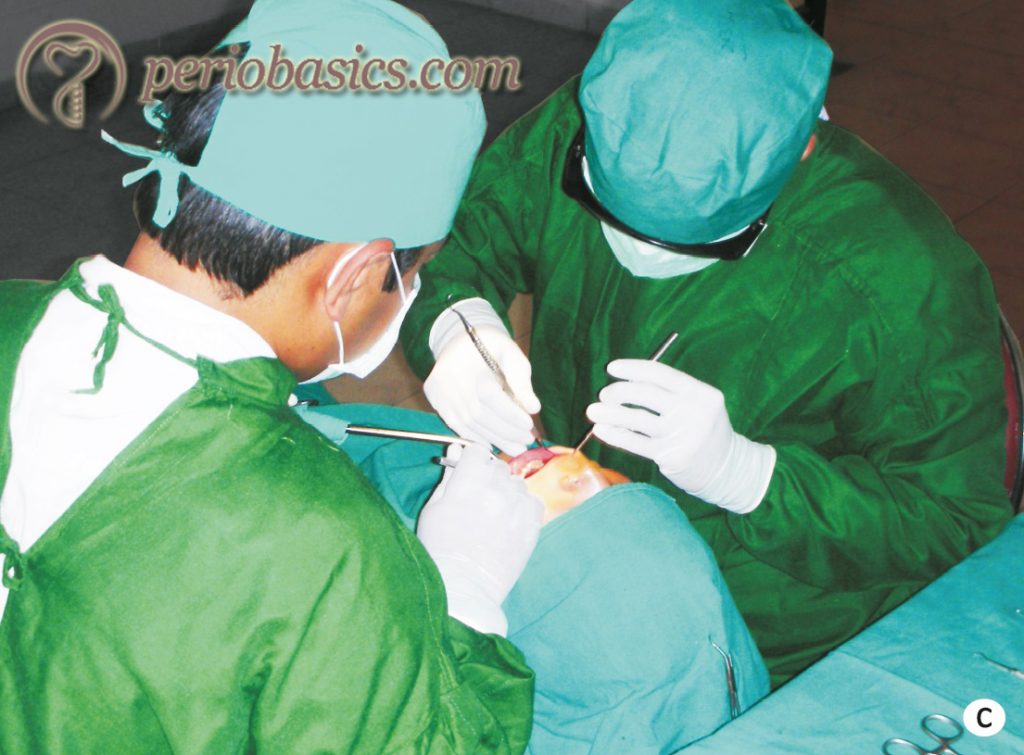
Conclusion
In the above discussion, we discussed various aspects of the preparation of the operating room, operating team, and patient. These protocols should be followed for each and every surgical procedure. It not only assures the safety of the operators and the patients but also minimizes the infection-related post-operative complications. In the upcoming articles, we shall read about the remaing principles of periodontal surgeries.
References
References are available in the hard-copy of the website.
Periobasics: A Textbook of Periodontics and Implantology
The book is usually delivered within one week anywhere in India and within three weeks anywhere throughout the world.

